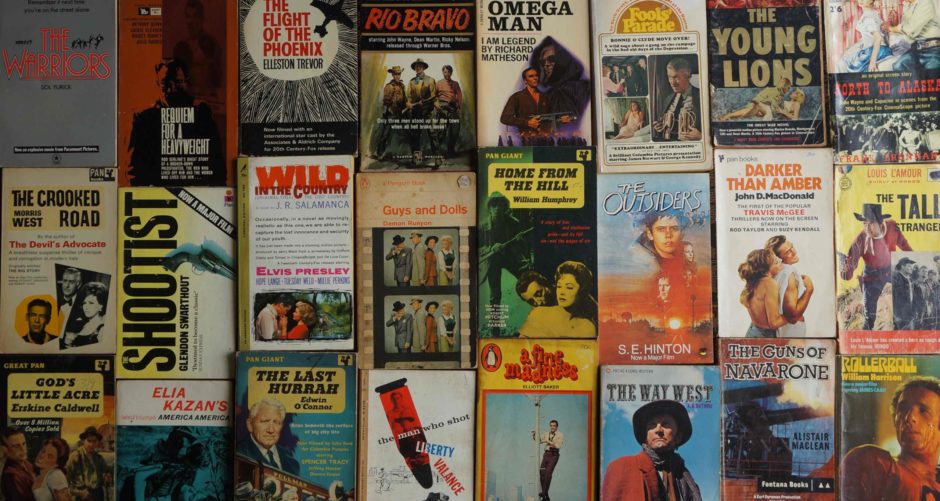This blog is a celebration of the “movie tie-in” novel.
Wikipedia describe them as: “A movie tie-in book is a book, frequently a paperback but occasionally a trade paperback or a hardcover, that has a direct relationship to a specific film. Usually, the cover of the book will bear photography of the film’s stars, and slogans indicating that it is directly related to a specific film”.
In the days before the internet there was nothing better than coming across a movie tie-in novel in a second-hand store and saying “wow, I loved that film, and it’s based on a novel, I have to read this!”
The cover art, and the fond recollection of the film was an important factor in deciding to purchase the novel. Sleeve art has been important in books going back to the early 20th century, but movie tie-in art is something special. It must convince you to buy a book that, normally, is from a film you have seen, and so, you know the story of.
A cynic might say that the movie tie-in is nothing more than cashing in on the movie by targeting people who have seen the film and liked it enough to buy the book. Maybe, but in pre TV reruns, pre VHS, pre DVD, and pre streaming days that was the only way to relive a film.
Whatever the reason, it works, and many movie tie-ins have been published
They aren’t all the same though. There are a number of types of movie tie-ins:
- the straight movie tie-in – where the original novel or story has been republished with a movie cover or sleeve;
- the novelization movie tie-in – where a writer (sometimes the actual screenwriter but not always) has written a novel based on the original film and screenplay.
- the novelization movie tie-in adapted from an original novel – where a writer (sometimes the actual screenwriter but not always) has written a novel based on the screenplay, which in turn was based on an original novel by someone else.
- the abridged movie tie-in – where the author’s original novel or story has been abridged (or retold) to reflect the movie;
- the ancillary movie tie-in – where the characters are given a new story which has nothing to do with the film. These tie-in books may or may not be considered part proper movie tie-ins.
There is some snobbism against movie tie-ins in the assumption that the person is only reading the book because they have seen the film and because they hadn’t read that novel prior to the film. It is assumed that any appreciation of the book rests only as a result of the film. That may be true, but, sometimes, a book extends your appreciation of the film (and its subject matter), or opens your mind up to how the film may have been improved or how the film improved the book.
Sometimes, whole other stories or sub stories take place which effect character and tone making the book quite different to the film. With novelisations, some novelisations are written based on a screenplay (to have the book out when the film hits) but because it is written prior to the film’s release, the film released could be wildly different if the script has been altered or cut during filming.
But, this adds to the joy. A film that slavishly recites what’s happening on screen is a script with stage directions.
Even when there are departures from the film you remember there is still a feeling of intimate familiarity in reading a book based on a film you have seen. You know, or think you know, where the book is going to go, but that isn’t a problem, as “the ride” is the fun and you relive the images you saw on the screen.
Sometimes you don’t even need that. I have bought some movie paperbacks just because I like an actor, and I may not have even seen the movie (yet). In the days before DVDs and internet shopping sometimes reading the movie tie-in was the only way of experiencing the film.
Either way, there are many books I have read that I may not have if it wasn’t for some emotional attraction I have to the film or its stars. I have discovered many authors this way and read many authors other novels which I may not have otherwise.
And, ultimately, isn’t that the purpose of a book … to be read?
Does it matter how you get there?
And if a movie (bad or good) helps you enjoy a book more, where is the harm?
So, let’s celebrate novels and movies through the movie tie-in .

yep re Kirk … no one pushes Kirk around. His Bryna Production Company was involved with (partially funded) POG ..and…